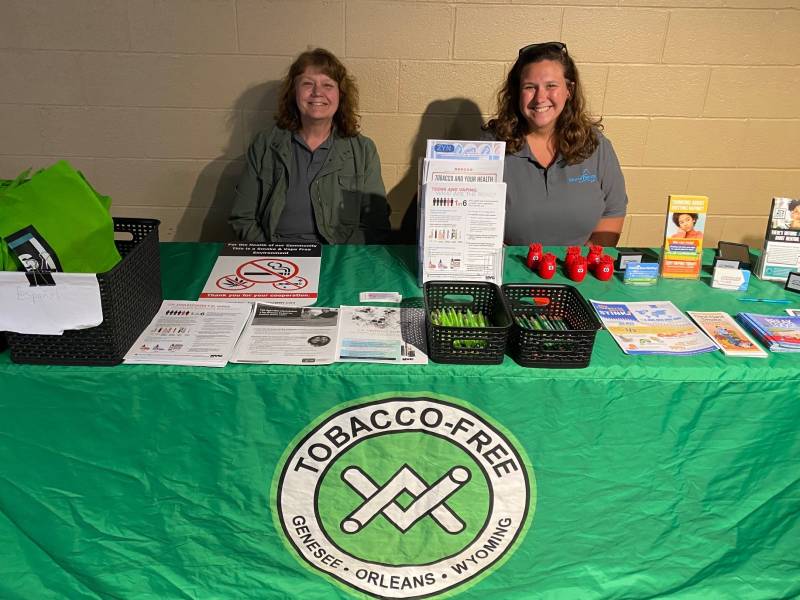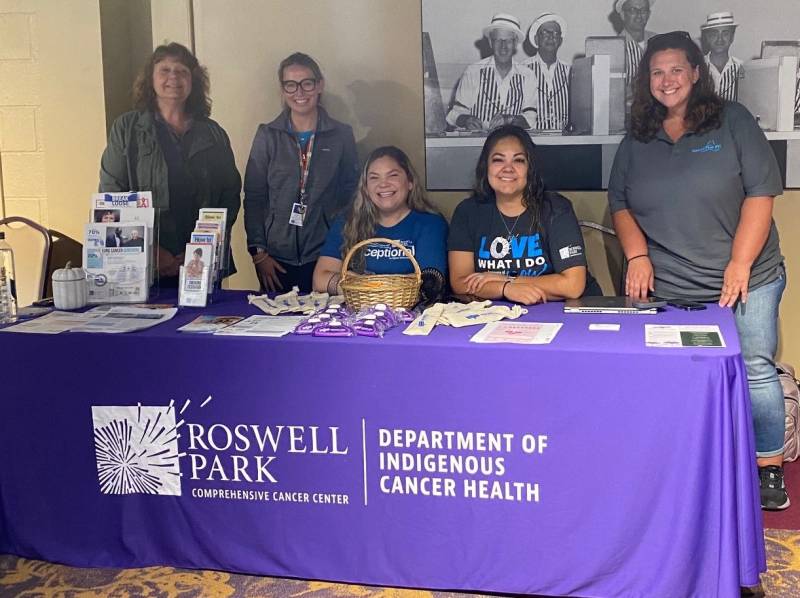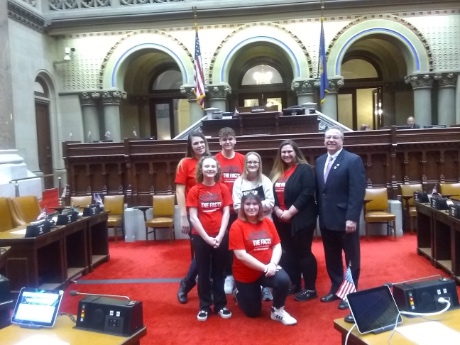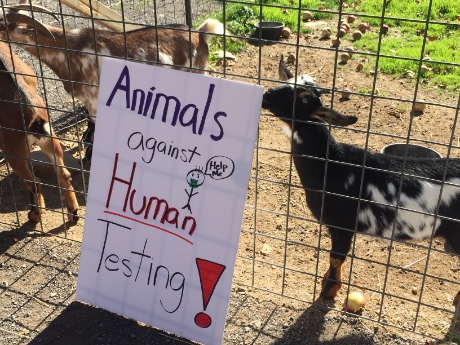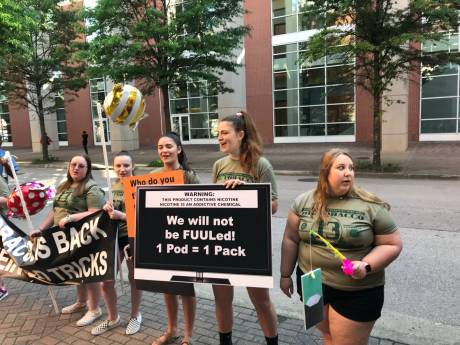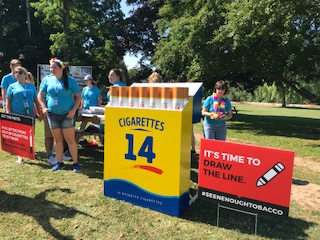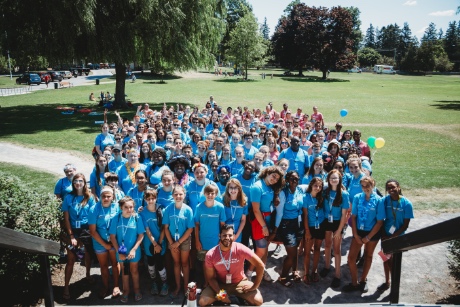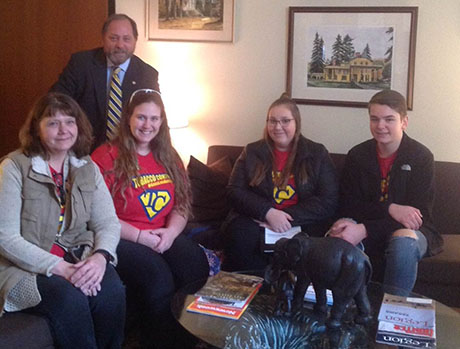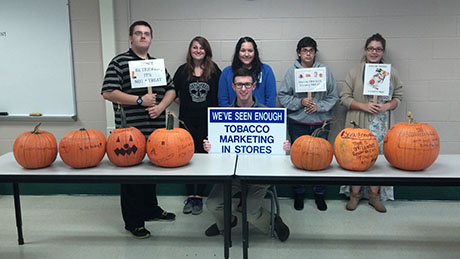Press release:
A total of 120 teen leaders from New York State, including six from St. Joseph Catholic School and Notre Dame High School in Batavia, targeted Altria Group executives and shareholders on Thursday, May 16th, with an anti-tobacco, anti-nicotine message for the fourth consecutive year.
Their actions, centered outside the Richmond Convention Center in Richmond, Va., and areas nearby, focused on why the tobacco giant baited consumers and public health officials with the promise of withdrawing pod-based nicotine products from the market in order to combat teen vaping use, only to invest billions in an e-cigarette company.
“Altria blamed nicotine pods and fruity flavors for fueling a surge in teen vaping,” said Brittany Bozzer, coordinator of the Reality Check program of Tobacco-Free GLOW. “If that’s the case, then why did they invest in Juul, the company that made these types of e-cigarettes so popular?”
Altria Group poured $12.8 billion into the e-cigarette company Juul Labs. This investment will allow Juul products to be displayed alongside regular cigarettes in the nation’s retail outlets, a combination that undercuts earlier promises Altria made with former Food and Drug Administration (FDA) Commissioner Scott Gottlieb to clamp down on the youth vaping “epidemic.”
“Despite what they say, Altria spends billions marketing their deadly products right in front of us, first cigarettes and now Juul,” said Krysta Hansen, a Notre Dame High School sophomore and Reality Check champion.
“Their goal is to create a new generation of customers—just in a different product. Enough is enough, already!”
The demonstrating teens represent Reality Check of New York and some were dressed in waders and carried fishing poles with a fresh catch of Juul nicotine pods and Marlboro cigarettes dangling from them.
Eight Reality Check teens and two youth leaders were given shareholder proxy tickets and went inside the meeting to address corporate tobacco executives and ask questions.
Some youths took their stories right to the biggest fish – the Chairman and Chief Executive Officer of Altria Group, Howard Willard.
They want Altria executives, as well as the entire tobacco industry, to know that they won’t be “Fuuled” by Big Tobacco investment in Juul and will continue to carry out the awareness-raising work they start in Richmond in their communities back home.
Public health officials and youth leaders for Reality Check, who have successfully fought to eliminate youth-attracting marketing tactics like colorful packaging and candy flavors in cigarettes through the years, see this as their next big battle to reduce teen tobacco use.
Studies show that kids who shop in stores with tobacco marketing, such as gas stations and convenience stores, are 64 percent more likely to start smoking than their friends who don’t.
Reeling in more information:
Findings on youth tobacco use and tobacco industry marketing in places where children and young adolescents can see it indicate:
- The average age of a new smoker in New York is 13 years old, and 90 percent of adult smokers say they first tried smoking by age 18.
- The U.S. tobacco industry spent an estimated $9.5 billion on advertising and promotion of cigarettes and smokeless tobacco in 2013. This includes nearly $220 million annually in New York State, or nearly $602,000 a day.
- Stores popular among adolescents contain almost three times more tobacco marketing materials compared to other stores in the same community.
Last week's Altria shareholders demonstration was a joint effort between Reality Check NY, No Limits of Nebraska, and Counter Tools of Chapel Hill, N.C., a nonprofit organization that provides training to public health workers who are working on point-of-sale tobacco control.
Reality Check is a teen-led, adult-run program that seeks to prevent and decrease tobacco use among young people throughout New York State.
In preparation for demonstrating on Thursday, the Reality Check youth spent all day Wednesday learning about tobacco control policies; how the tobacco industry contracts with retailers; and how they can stand up, speak out and make a difference in the fight against Big Tobacco.
For more information about Reality Check, visit realitycheckofny.org.
The New York State Department of Health, Bureau of Tobacco Control funds Tobacco-Free GLOW to increase support for New York State’s tobacco-free norm through youth action and community engagement. Efforts are evidence-based, policy-driven, and cost-effective approaches that decrease youth tobacco use, motivate adult smokers to quit, and eliminate exposure to secondhand smoke.
